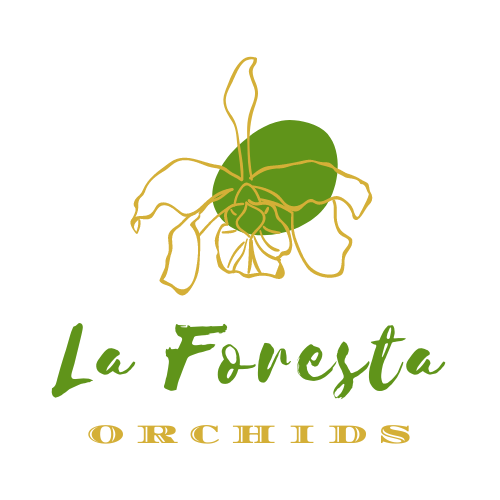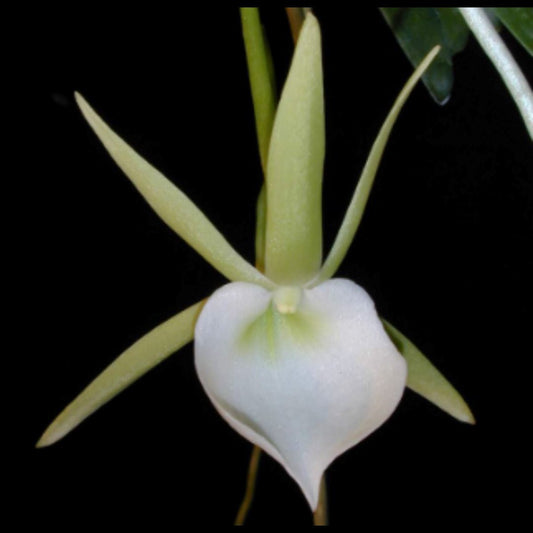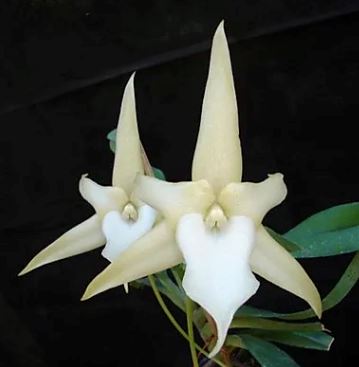
Do you know which are the Most Popular Fragrant Orchids Species in the World?
While we revel in the wonderful fragrance of many orchids, it is important to remember that fragrance plays an essential role in their survival strategy. Just as we often wear perfumes to seduce a mate, orchids spice up their lives in order to attract pollinators.
Flowers that are pollinated by insects are often brightly colored and fragrant. They are advertising the fact that they offer nectar or other substances for different creatures to feed on. Pollinators pick up the sticky pollen as they feed and transfer it to other flowers.
Every orchid species has its own unique strategy to attract pollinators:
- Some have wonderful fragrances yet produce no nectar and trick insects into thinking there is a free meal.
- Other orchids produce odors that mimic the pheromones of bees and wasps (some even look like female insects) so that males try to mate with the orchids.
- Some bees even collect the orchid's fragrance and store it on their hind legs to use, perhaps, to attract their own mates.
- Orchids are pollinated by bees, wasps, flies, butterflies, hummingbirds, moths, gnats and beetles. Flies, gnats and beetles are attracted to dull-green and reddish-brown orchids with foul odors. Bulbophyllum beccarii attracts flies by smelling like a decaying animal.
- Butterflies and hummingbirds tend to gravitate to bright yellow and red flowers that are full of sweet nectar. Bees love nectar and cheerful flowers that range from purple and blues to bright yellows.
Most orchids smell best in the morning hours when the light is bright. The fragrance fades in the afternoon when the temperature increases. This corresponds with the pollination practices of insects that are more active in early hours.
Other orchids are fragrant in the evening. The well known queen-of-the-night orchid, Brassavola nodosa, starts exuding its heavenly fragrance at dusk when its pollinators, nocturnal moths, come out.
Fragrances are volatile. They often develop and become more complex the longer you smell them. A fragrance may catch your attention with a strong citrus smell that sweetens and becomes floral after a few minutes.
At first Dendrobium anosmum smells like raspberry, shifts to strawberry, then rhubarb, and finally hyacinth. Some fragrances are mild, while others are intoxicating. There are many factors that affect fragrance.
Orchids tend to be more fragrant on sunny rather than shady days, when the volatile oils warm up and diffuse. Fragrances tend to linger longer in areas of high humidity. Locations where the air is still tend to trap fragrances, while smells will dissipate in breezy sites.
Over the past several decades, a greater emphasis has been placed on hybridizing fragrant orchids. The ever popular moth orchid, Phalaenopsis, is now being bred for fragrance (although it tends to be delicate). Cymbidiums are now being bred in miniature, easier-to-grow, forms that have a nice fragrance. Cymbidium Golden Elf 'Stardust' is one example with a subtle rose perfume.
If you prefer strong fragrances, Rhynchostylis or Zygopetalum are two good options for the orchid connoisseur.
If you are a beginner, you are better off trying a Cattleya or an Oncidium.
Cattleyas have fragrances that either revive you or make you swoon; they are complex fragrances (many layers) that range from citrus to beautiful floral.
Oncidiums have fragrances that make you hungry; they range from chocolate and vanilla to tropical punch.
When orchids are judged for fragrances, experts take several qualities into consideration. They evaluate the orchid based on the intensity (strength) of the fragrance, the distance the smell travels, its general appeal (pleasant smell) and the complexity (well-roundness) of the fragrance. Expert perfumers train for 5 to 6 years and can identify over 3,000 distinct odors.
How then should we smell orchids? Some say the best thing to do is to just stick your nose into the plants. (Remember not to handle the flowers, otherwise you will damage the petals.) Others wave their hand above the orchid in the hope of drawing the odor out of the flower, while some people take a few short sniffs right above the flower to fill their nostrils. Whichever one you decide is your chosen method, remember to take time in your day to smell the orchids.
Popular Fragrant Orchids
Brassavola nodosa smells like lily-of-the-valley
Brassavola Little Stars smells like sweet aroma
Cattleya alliance smells like floral, sweet, citrus
Cochleanthes amazonica smells like spicy, candy
Dendrobium anosmum smells like raspberry, strawberry, rhubarb
Dendrobium nobile smells like floral
Encyclia radiata smells like coconut
Lycaste aromatica smells like cinnamon
Maxillaria tenuifolia smells like coconut
Miltoniopsis smells like rose
Oncidium Sharry Baby smells like chocolate and vanilla
Oncidium Twinkle smells like vanilla
Oncidium Hawaiian Sunset smells like floral
Oncidium cheirophorum smells like sweet, citrus
Oncidium ornithorhynchum smells like vanilla
Phalaenopsis Caribbean Sunset smells like rose
Phalaenopsis Orchid World 'Roman Holiday' smells like spicy
Phalaenopsis schilleriana smells like floral
Phalaenopsis violacea smells like floral
Rhynchostylis smells like floral
Vanda coerulescens smells like grape bubble gum
Zygopetalum smells like hyacinth
When we decided to start our new collection of orchids back in 2019, we thought how wonderful it would be to start collecting the most fragrant orchids known, this way we will not only have beautiful orchids appealing to our eyes but also for our scent.
Back then we went through a similar list like this one and went ahead for the search to get them all, which by the way, is my favorite part, looking, investigating and finally acquiring what we were looking for, it was so rewarding... and believe me they have never been disappointed, my garden smells delicious every corner.
Which of them do you already have in your collection? None, Don't worry, we can help you get your collection started today!
XOXO @LaForestaOrchids
Sources from the New York Botanical Garden - Librarian March 2022








